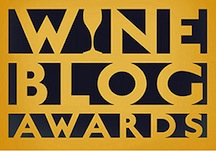 Over the past 25 years of working in wine PR and media relations it has been extremely rare that I have had to advise a client, “don’t respond” or “craft a careful response” to an attack or criticism leveled at them. The fact is, the vast majority of folks working in and around he wine industry simply don’t come in for the kind of public criticisms or attacks that participants in other industries must suffer. And yet, in those few instances when I have had to advise a client whether (or how) to respond to a public attack on their work or integrity, it has always been a most difficult conversation.
Over the past 25 years of working in wine PR and media relations it has been extremely rare that I have had to advise a client, “don’t respond” or “craft a careful response” to an attack or criticism leveled at them. The fact is, the vast majority of folks working in and around he wine industry simply don’t come in for the kind of public criticisms or attacks that participants in other industries must suffer. And yet, in those few instances when I have had to advise a client whether (or how) to respond to a public attack on their work or integrity, it has always been a most difficult conversation.
What follows is a way of thinking about a response to criticism or attacks if you or your organization find yourself the object of either.
SUBSTANCE
Public criticism or attacks on a person or organization can be either legitimate or illegitimate. They can be warranted or unwarranted. They can be meant in good faith or bad. The first thing you must do is determine under which of these headings the criticism/attack falls. This is very difficult to do because it requires you step back and evaluate yourself or your work. Oftentimes it’s best to lean on an adviser, consultant or friend to help work though this.
If you can determine that the criticism/attack is legitimate, warranted and offered in good faith, then it is probably a good idea to respond. Whether you respond in a public forum or privately is another question altogether. Additionally, you will want to evaluate the impact your public or private response will have on you and/or your business. Try to remember that legitimate criticisms leveled in good faith can be a gift, no matter how difficult reading or hearing them may be.
If on the other hand it is clear that the attack is illegitimate and unwarranted, leveled without good faith, mean-spirited, perhaps the result of envy or jealousy, potentially libelous, personal or simply delivered without good faith, then it is almost always a good idea to move on, not respond and try to practice the art of empathy for those who are likely bedeviled by issues profoundly personal.
However, if a personal an illegitimate attack is leveled in a forum that will attract the attention of a large number of peers or a large audience, then you may find yourself in a position where a well-crafted response is a necessity if only because lack of a response might result in the initial insult damaging your reputation or because you want to dissuade other troubled people from embarking on the same kind of libel in the future.
This latter situation will rarely arise.
THE ART OF THE RESPONSE
In the event that you need to publicly respond to a legitimate criticism, how that response is delivered becomes very important primarily because it will set the tone for continued engagement. You almost always want to prevent future public discussion of the issue.
• The “Thank You” Response
Remember a legitimate, warranted criticism of your work or actions is in fact a gift because it gives you a chance to be better at what you do. When you receive a gift, you should say thank you. This amounts to acknowledging the criticism, perhaps explaining how you have already been at work addressing the issue raised, commenting on how the issue became an issue in the first place, and probably noting how you will be responding in the future. And, thanking them for their considered thoughts.
• The “Correction” Response
Oftentimes a legitimate criticism stems from a misunderstanding of the facts. If a critic of your work or actions does not have their facts right, then it is best to simply correct them by pointing to the observable fact they got wrong, thanking them, again, for their thoughtfulness, then briefly responding to anything they got right. This should always been done in a civil tone.
• The “We All Have Our Opinions” Response
Because most well-meaning criticisms derive from one’s opinion, this is the most common response you will be giving. If there is in fact a legitimate difference of opinion on, say, the meaning of your work or actions, the importance of your work or actions or the philosophy that drives your work or actions, then it is important that your response first and foremost note that what separates you from your critic is a difference of opinion and that you beg to differ. At the same time, it’s important for your response to acknowledge the philosophical issue at the heart of your difference; that is, it’s important for your response to note the legitimacy of different opinions on this issue.
• The Response to Unwarranted Attacks
If you find yourself in a situation where, due to the size or importance of the audience reading an illegitimate and unwarranted attack on you or your work, you must respond, there are some important guidelines to keep in mind:
1. Don’t respond in the forum that gave voice to the unfaithful attackers.
You want to move any ensuing conversation to more agreeable and favorable grounds. For example, if your work is attacked or if libelous attacks are made on you personally in a blog or news medium, you will want to respond elsewhere, either on your own ground or on ground that is more favorable to you. There is no sense in giving the original attack reason to be seen by more people or to have your response altered.
2. Muster Your Forces
It’s always a good idea to enlist allies in this sort of response. It’s easy enough to ask friends and allies to respond in your stead in another forum or ask them to weigh in along with your own response. There is always more power in numbers
3. Don’t Wrestle With Bottom Feeders
If the attack on you is nasty, mean, and personal, it is never a good idea to respond in kind. When you wrestle with bottom feeders, their mud will get all over you. More importantly, this kind of attack will almost always be seen for what it is: dirty, stinking, mud. Rather, when you must respond to this type of attack, try to do so simply, quickly, briefly, and with a graceful volley across the net that strikes at the heart of the critic’s lack of integrity, then leave the court. For example “I found your recent personal attack on (me, my work, etc) unsettling for its complete lack of all integrity, its blatant lies and for its purposeful mean-spirited nature. You should be ashamed of yourself.”
It is never fun to have to respond to criticism, whether justified or not. But sometimes you must. Try always to do so with a level head and with purpose. If you approach the task in this manner, it is more than likely that you will be able to move on quickly and profitably.
 Harvey Posert Jr. died on October 3 in St. Helena after a brief illness. At the age of 84, he’d lived many lifetimes, from a privileged childhood in Memphis to college at Yale to several years in military counter-intelligence in Europe. Then there were the phases of his career, from the copy desk at The Memphis Commercial Appeal to working for Dan Edelman in New York and San Francisco, before coming to wine country to represent Robert Mondavi and later Fred Franzia, as well as numerous others.
Harvey Posert Jr. died on October 3 in St. Helena after a brief illness. At the age of 84, he’d lived many lifetimes, from a privileged childhood in Memphis to college at Yale to several years in military counter-intelligence in Europe. Then there were the phases of his career, from the copy desk at The Memphis Commercial Appeal to working for Dan Edelman in New York and San Francisco, before coming to wine country to represent Robert Mondavi and later Fred Franzia, as well as numerous others.


